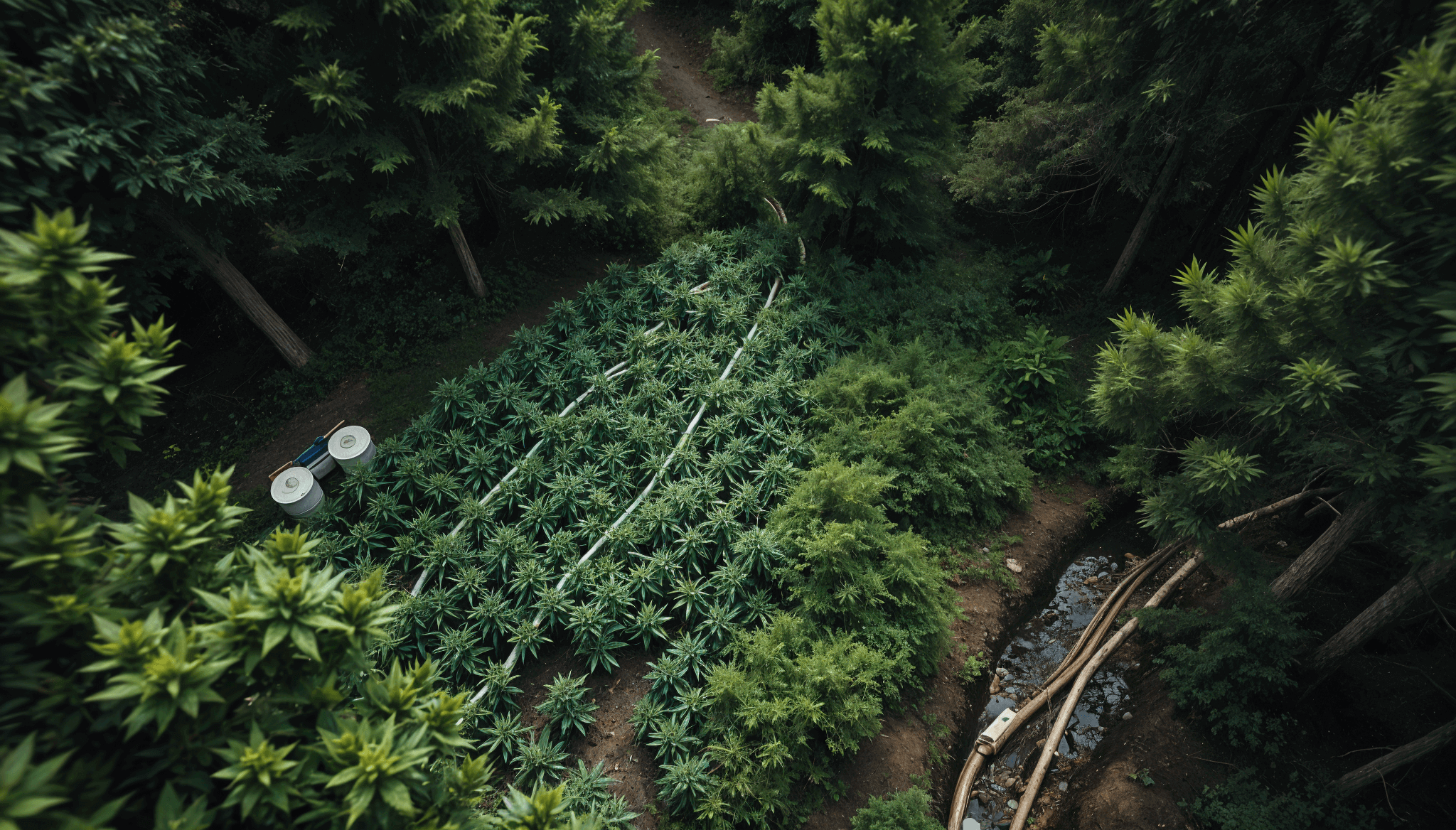The illegal cultivation of cannabis is not just a minor issue but a significant threat to California’s treasured natural resources. This ongoing problem has been escalating over the years, putting both the environment and public safety at risk. While many are aware of cannabis’ rising legal market, fewer realize the detrimental effects of unauthorized grow sites scattered across various state parks.
The impact on California’s natural resources
California State Parks have faced tremendous challenges due to the presence of illegal cannabis plantations. At Anza-Borrego Desert State Park alone, authorities removed thousands of plants this year. The environmental damage from these operations extends beyond the simple loss of vegetation. Illegal growers often introduce harmful pesticides, dispose of waste irresponsibly, and disrupt existing ecosystems.
The Cannabis Watershed Protection Program (CWPP) team reported that besides cannabis plants, they recovered tons of garbage and extensive lengths of irrigation lines littering protected park areas. These materials contaminate water sources and destroy habitats, leading to long-term ecological consequences. As a result, the state has had to allocate substantial resources to clean up and restore affected zones.
Specific parks most affected
Several state parks in California have seen significant damage from illegal cultivation activities. These include well-known locations such as Clear Lake State Park and Colonel Allensworth State Historic Park and recreational locales like Lake Oroville State Recreation Area and Onyx Ranch State Vehicle Recreation Area.
The continuous efforts by state officials show progress, yet the scale of the problem indicates it’s far from resolved. Over recent seasons, programs dedicated to eradicating illegal growths led to numerous arrests and the confiscation of processed cannabis and firearms, highlighting the multifaceted dangers posed by these unlawful activities.
Challenges faced by enforcement teams
Teams tasked with combating illegal cannabis grows face numerous obstacles. The remote and vast nature of California state parks complicates detection and enforcement. Coordinated efforts require specialized equipment and personnel trained to handle both immediate threats and the broader environmental impacts.
Enforcement teams often find themselves working under dangerous conditions. Illegal cultivation sites can be booby-trapped and guarded by individuals prepared to defend their operations forcibly. Consequently, interventions must be meticulously planned to ensure the safety of both law enforcers and the surrounding communities.
Successes and ongoing efforts
Despite these challenges, the Special Enforcement Team (SET) has made notable strides. Recent operations resulted in the removal of over 25,000 cannabis plants, alongside the seizure of large amounts of processed cannabis and weapons. Such achievements underscore the dedication and effectiveness of the SET and other collaborative law enforcement initiatives.
This proactive stance is further backed by financial support from the Cannabis Tax Fund. Since its inception, the fund has provided essential resources, allowing state parks to dedicate staff to identifying and disrupting illegal growth. Efforts include cleaning up hazardous sites and restoring ecosystems impacted by cultivation.
The importance of public awareness
Public involvement is crucial in tackling the issue of illegal cannabis cultivation. Raising awareness about these activities’ environmental and health risks can lead to more community vigilance and support. Educating state park visitors about recognizing and reporting suspicious activities can significantly aid law enforcement’s efforts.
Additionally, promoting the benefits derived from legal, regulated cannabis markets—both economically and environmentally—can help diminish the appeal of unregulated alternatives. Policies ensuring sustainable practices within the legal market further mitigate against the draw towards illegal cultivation.
A look to the future
California’s approach to combating illegal cannabis cultivation continues to evolve. By integrating advanced technologies for surveillance and monitoring while expanding educational outreach, the state aims to reduce the prevalence of unauthorized growth significantly.
The ongoing commitment by government agencies, supported by public awareness campaigns, holds promise for preserving California’s remarkable natural landscapes. Ensuring these lands remain safe and beautiful for generations includes tackling the pressing challenge of illegal cannabis cultivation head-on.





